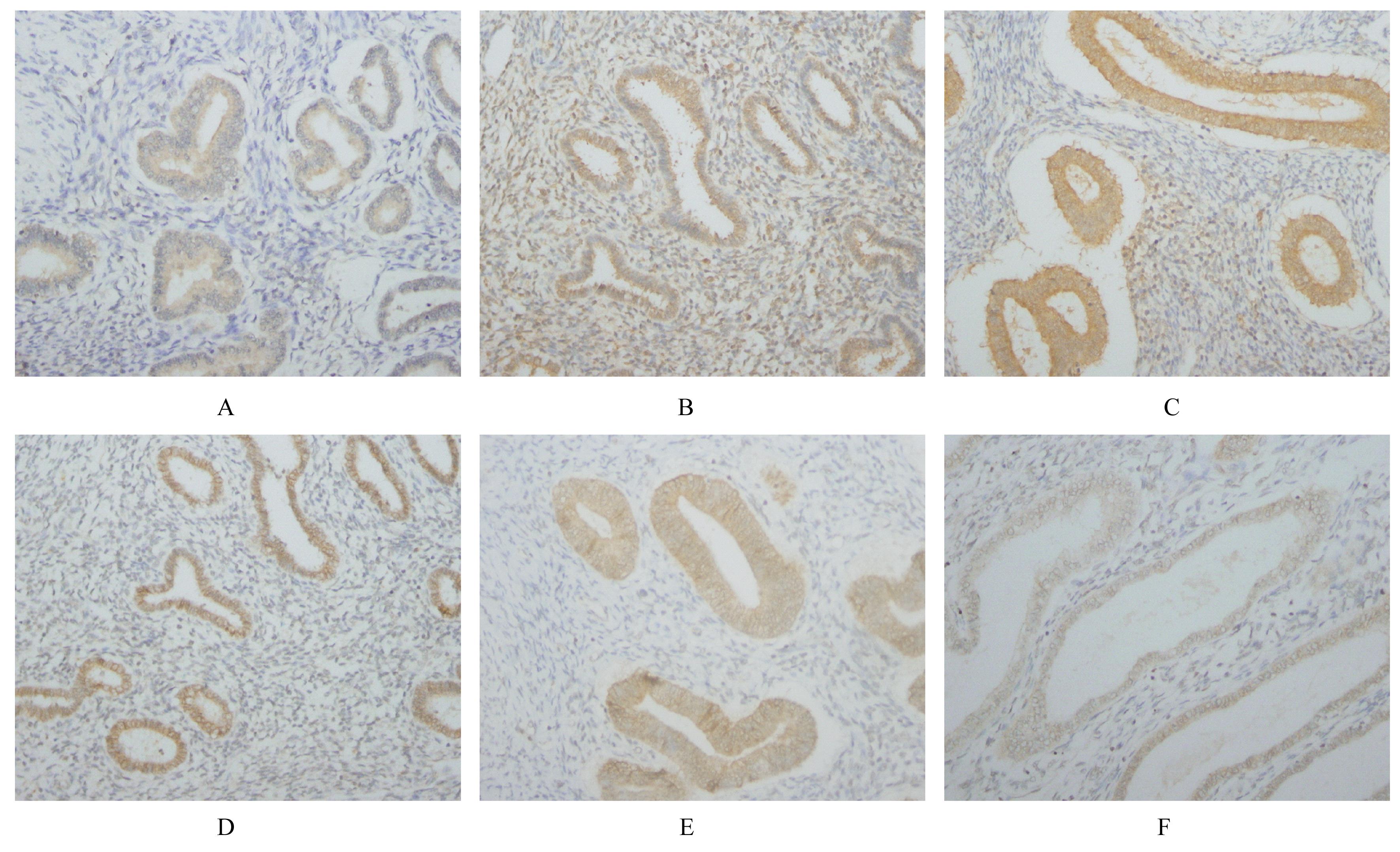吉林大学学报(医学版) ›› 2023, Vol. 49 ›› Issue (6): 1539-1546.doi: 10.13481/j.1671-587X.20230617
子宫腺肌病患者子宫内膜组织中环氧合酶2和β-连环蛋白表达水平及其与痛经的关系
张晓颖1,何源哈达2,王静媛3,宿瑞俊4,王淇1,鲁容钶1,郑博1,郑健1( )
)
- 1.内蒙古医科大学附属医院妇产科疾病研究中心,内蒙古 呼和浩特 010059
2.内蒙古医科大学基础医学院人体解剖学教研室,内蒙古 呼和浩特 010059
3.内蒙古医科大学基础医学院病理学教研室, 内蒙古 呼和浩特 010059
4.内蒙古医科大学附属医院临床检验中心,内蒙古 呼和浩特 010059
Relationship between expression levels of cyclooxygenase-2 and β-catenin in endometrium tissue of adenomyosis patients and dysmenorrhea
Xiaoying ZHANG1,Yuanhada HE2,Jingyuan WANG3,Ruijun SU4,Qi WANG1,Rongke LU1,Bo ZHENG1,Jian ZHENG1( )
)
- 1.Research Center for Obstetrics and Gynecology Diseases,Affiliated Hospital,Inner Mongolia Medical University,Hohhot 010059,China
2.Department of Human Anatomy,School of Basic Medical Sciences,Inner Mongolia Medical University,Hohhot 010059,China
3.Department of Pathology,School of Basic Medical Sciences,Inner Mongolia Medical University,Hohhot 010059,China
4.Clinical Laboratory Center,Affiliated Hospital,Inner Mongolia Medical University,Hohhot 010059,China
摘要:
目的 探讨子宫腺肌病(AM)患者在位子宫内膜和病灶组织及血清中环氧合酶2(COX-2)和β-连环蛋白(β-catenin)表达水平,并阐明其与痛经的关系。 方法 选取90例经腹子宫切除的临床和术后病理确诊AM的痛经患者作为AM组,30例无痛经子宫肌瘤(UM)患者作为UM组。采用视觉模拟评分(VAS)法检测AM患者痛经程度,并将90例AM组患者分为轻度痛经组、中度痛经组和重度痛经组(n=30)。采用免疫组织化学(IHC)法检测2组患者子宫内膜组织中COX-2和β-catenin蛋白表达水平,酶联免疫吸附试验(ELISA)法检测2组患者血清中COX-2和β-catenin水平,Spearman相关分析法分析2组患者子宫内膜组织中COX-2和β-catenin蛋白表达水平与患者痛经程度的关系。 结果 COX-2蛋白主要表达于子宫内膜组织细胞浆中,β-catenin蛋白主要表达于子宫内膜组织细胞膜或细胞浆中。与UM组比较,AM组患者病灶和在位子宫内膜组织中COX-2蛋白表达水平升高(P<0.05),β-catenin蛋白表达水平降低(P<0.05);与AM组患者在位子宫内膜组织比较,AM组患者病灶组织中COX-2蛋白表达水平升高(P<0.05)。与轻度痛经组比较,中度痛经组AM患者病灶组织和重度痛经组AM患者在位子宫内膜及病灶组织中COX-2蛋白表达水平升高(P<0.05);与中度痛经组比较,重度痛经组AM患者在位子宫内膜和病灶组织中COX-2蛋白表达水平升高(P<0.05)。不同程度痛经组AM患者在位子宫内膜和病灶组织中β-catenin蛋白表达水平比较差异无统计学意义(P>0.05)。与UM组比较,AM组患者血清中COX-2水平升高(P<0.05),β-catenin水平降低(P<0.05)。与轻度痛经组比较,中度痛经组和重度痛经组患者血清中COX-2水平升高(P<0.05)。不同程度痛经组患者血清中β-catenin水平比较差异无统计学意义(P>0.05)。AM患者病灶组织中COX-2蛋白表达水平与β-catenin蛋白表达水平呈负相关关系(r=-0.364,P<0.05);AM患者在位子宫内膜和病灶组织中COX-2蛋白表达水平与痛经程度呈正相关关系(r=0.511,P<0.05;r=0.696,P<0.05),β-catenin蛋白表达水平与痛经程度无相关性(P>0.05)。AM患者术前血清中COX-2水平与β-catenin水平呈负相关关系(r=-0.534,P<0.05),COX-2水平与痛经程度呈正相关关系(r=0.613,P<0.05)。 结论 AM患者子宫内膜组织中COX-2蛋白表达水平升高和β-catenin蛋白表达水平降低及二者的关联性均可诱导AM发生和子宫内膜异位侵袭,COX-2高表达可能促进了痛经,可作为治疗AM及相关痛经的潜在分子靶点。
中图分类号:
- R711.74


